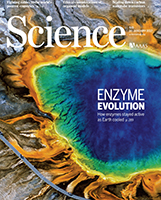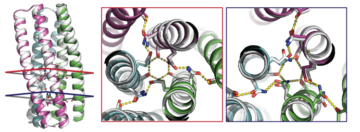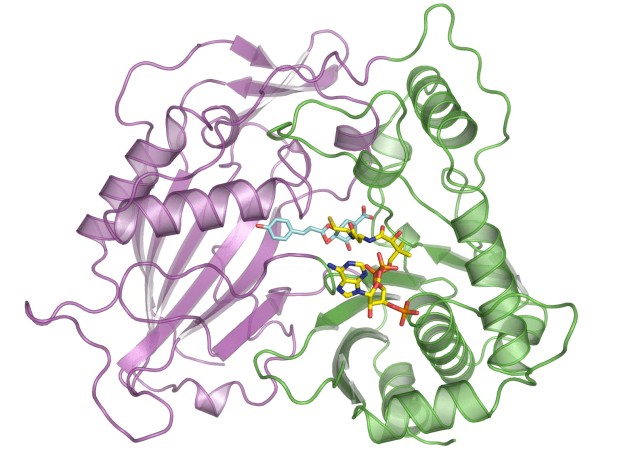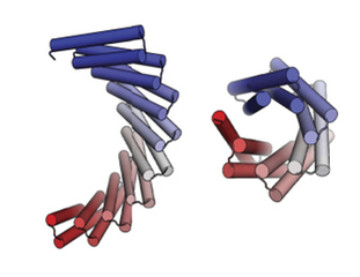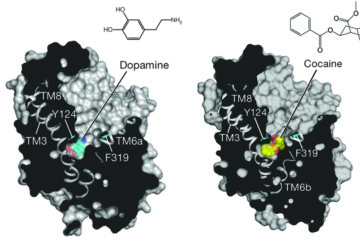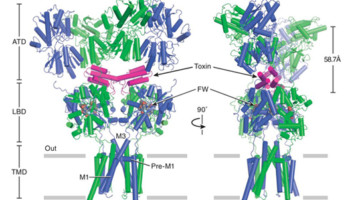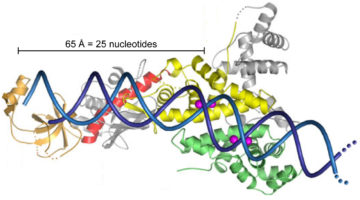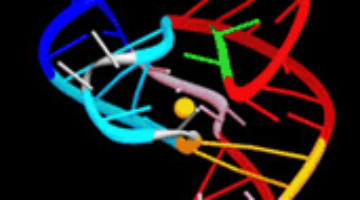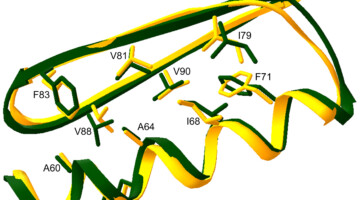With early life likely to have existed in a hot environment, enzymes had to cope with an inherent drop in catalytic speed caused by lowered temperature. Here, researchers characterize the molecular mechanisms underlying thermoadaptation of enzyme catalysis in adenylate kinase using ancestral sequence reconstruction spanning 3 billion years of evolution. Read more »
Validation of Novel Proteins Inspired by Nature
Designed proteins containing hydrogen-bonding modules have been validated by crystallography and SAXS. The ability to design synthetic molecules that combine the specificity of DNA-like binding with protein function opens up huge opportunities for the fields of synthetic biology and materials science. Read more »
Reducing Plant Lignin for Cheaper Biofuels
Scientists have identified and validated a novel approach to reducing lignin in plants by tweaking a key lignin enzyme. Their technique could help lower the cost of converting biomass into carbon-neutral fuels to power cars and other sustainably developed bio-products. Read more »![]()
Exploring the Repeat-Protein Universe
Researchers have published a landmark study that used both crystallography and SAXS to validate computationally designed structures of novel proteins with repeated motifs. The results show that the protein-folding universe is far larger than realized, opening up a wide array of new possibilities for biomolecular engineering. Read more »![]()
![]()
Binding Behavior of Dopamine Transporter Key to Understanding Chemical Reactions in the Brain
Scientists working at the ALS recently solved the crystallographic structures of several amine transporters in an effort to better understand why the human brain responds to chemicals like dopamine and serotonin. What they found will help in the design of drugs to treat many neurological diseases, and may also lead to a better understanding of how addiction to abused drugs such as cocaine can be managed. Read more »![]()
![]()
Brain Receptor Structures Key to Future Therapeutics
Neurotransmitter receptor proteins are critical to learning and memory. Mutations are associated with neurological and neuropsychiatric conditions including Alzheimer’s, epilepsy, and autism. Structures of two such receptors, solved by x-ray crystallography, provide a blueprint for the development of therapeutics. Read more »![]()
![]()
First Detailed Look at RNA Dicer
Scientists have gotten their first detailed look at the molecular structure of an enzyme that Nature has been using for eons to help silence unwanted genetic messages: Dicer, an enzyme that plays a critical role in a process known as RNA interference.
Read more »![]()
![]()
Snapshots of Ribozyme Reaction States Reveal Structural Switch
RNA, like protein, can sometimes function as an enzyme (ribozyme) to speed biochemical reaction rates. But how does RNA, a simple polymer, enhance reaction rates by at least a million fold? Researchers obtained the structures of a ribozyme trapped in different states of its catalytic cycle, showing how a change in the RNA conformation governs the reaction mechanism. Read more »![]()
![]()
Designing a Novel Globular Protein Fold
A major challenge of computational structural biology has been to create, from scratch, new proteins with heretofore unobserved three-dimensional structures. Researchers have now developed and demonstrated a methodology for protein-structure prediction and design by creating the first artificial globular protein with a novel topology. Significantly, the x-ray structure agreed almost precisely with the structure specified by the computational model. Read more »![]()
![]()
